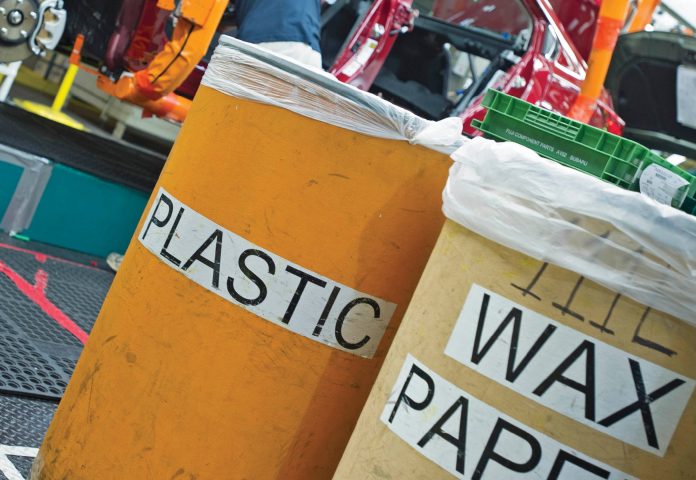Inside a huge Indiana warehouse, three people clad in white Tyvek jumpsuits, tall fireman boots, rubber gloves and safety glasses sifted through trash strewn across the floor. It was about 10,000 pounds of refuse, the contents of a compactor from Subaru of Indiana Automotive, the automaker’s U.S. assembly plant in Lafayette.
This wasn’t the scene of an accident or a crime. It was a dumpster dive by experts at Covanta Environmental Solutions, a sustainable–waste management company, hired to inventory exactly what Subaru threw away — and to keep every bit out of landfill.
Covanta then helped the automaker adopt the three Rs of environmental sustainability: reduce, reuse and recycle. Reducing the amount of muda (Japanese for waste) was key at the 3.5 million square-foot factory — a plant the size of about 60 football fields that currently assembles some 375,000 cars each year and employs 5,500 people.
To achieve Subaru’s zero-landfill goal, leaders at the Indiana plant examined and attacked every assumption, material and process. By convincing suppliers to ship parts in reusable containers, for example, Styrofoam packaging for some 80 engine parts is now used multiple times.
Finding markets for other waste proved more challenging — like used light bulbs, which have become fodder for reflective road striping. Metals found in welding ‘slag’ from the plant’s body assembly area are separated out and resold.
Of course, there are some items that can’t be reused or recycled, says Dave Schroeder, Covanta’s director of national accounts. They include waste from dashboards, carpet and other parts that are engineered in layers, making them difficult to pull apart. This non-hazardous material — less than 5% of Subaru’s total waste — is incinerated by Covanta to produce energy. The ash is then used in road-resurfacing materials.
Subaru Indiana met its five-year goal within two years — and became the first U.S. auto plant to achieve zero-landfill status. “We have sent nothing to a landfill since May 4, 2004,” says senior executive vice president Tom Easterday. “I like to tell people if they go to Starbucks for a cup of coffee, once they throw away that cup, they’ve put more into a landfill than we have in the last 13 years.”
Analysis:
This achievement is, on the part of Subaru, a truly impressive feat, and I appreciate that it shows the meticulous attention to each and every detail which is required to achieve true zero waste. In particular, this idea of going back to the source, and negotiating with external vendors to change the way they ship their product to the facility, made me think carefully about all the external shipments the university receives on a daily basis, and how much opportunity there must be there to greatly cut down waste.




